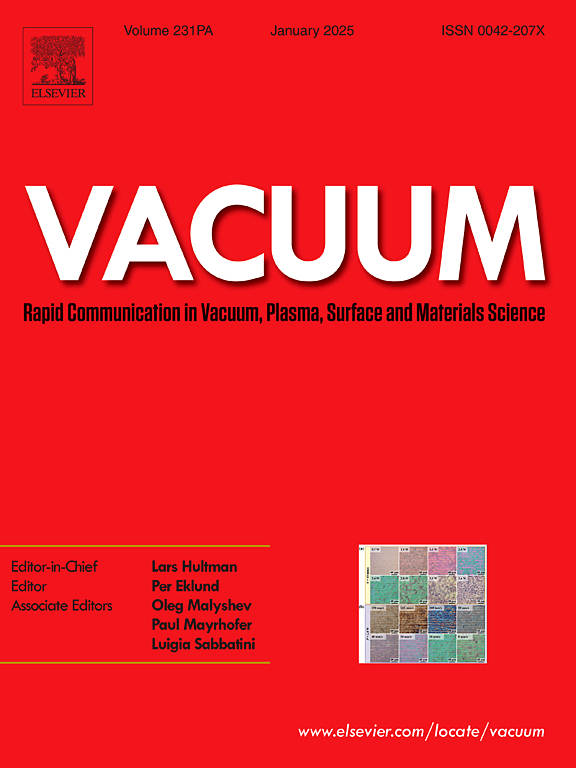利用硬模板制备的有序介孔 CrCeOx 催化剂用于甲苯和甲醛燃烧
IF 3.8
2区 材料科学
Q2 MATERIALS SCIENCE, MULTIDISCIPLINARY
引用次数: 0
摘要
采用真空辅助浸渍法,以三维有序介孔二氧化硅(KIT-6)为硬模板,制备了不同铬铈比例的介孔铬铈催化剂。通过热重分析(TGA)、X 射线衍射(XRD)、氮吸附-解吸(BET)、透射电子显微镜(TEM)、扫描电子显微镜(SEM)和温度编程还原(TPR)技术对催化剂的理化性质进行了表征。对甲苯和甲醛的氧化去除性能进行了评估。结果表明,所有催化剂的催化氧化活性均优于块状催化剂。具有相同 Cr/Ce 摩尔比的介质-Cr-Ce-1 催化剂比表面积更大(达 186 m2/g),可在较低温度下还原,并表现出最高的催化氧化性能。在空间速度为 30,000 h-1 和挥发性有机化合物含量为 1000 ppm 的条件下,甲苯和甲醛在 240 ℃ 和 160 ℃ 下的转化率分别达到 90%,表观活化能分别为 64.1 和 37.2 kJ/mol。该催化剂的优异性能与其发达的介孔结构、高比表面积、良好的低温还原性和分散性以及活性组分的协同效应有关。本文章由计算机程序翻译,如有差异,请以英文原文为准。
Ordered mesoporous CrCeOx catalyst prepared by hard template for toluene and formaldehyde combustion
The meso-Cr-Ce catalysts with different proportions of chromium and cerium were prepared using three-dimensional ordered mesoporous silica (KIT-6) as hard template by vacuum assisted impregnation method. The physicochemical properties of the catalysts were characterized by thermogravimetric analysis (TGA), X-ray diffraction (XRD), nitrogen adsorption-desorption (BET), transmission electron microscopy (TEM), Scanning electron microscopy (SEM) and temperature programmed reduction (TPR) techniques. The oxidation removal performance of toluene and formaldehyde was evaluated. The results show that all catalysts have better catalytic oxidation activity than the bulk counterpart. The meso-Cr-Ce-1 catalyst of same Cr/Ce molar ratio was larger in surface area (up to 186 m2/g) and could be reduced at lower temperatures, and exhibited the highest catalytic oxidation performance. At 30,000 h−1 of space velocity and 1000 ppm of VOC, toluene and formaldehyde conversions reached 90 % at 240 and 160 °C, respectively, and the apparent activation energies were 64.1 and 37.2 kJ/mol. The excellent performance of the catalyst is associated with its well-developed mesoporous structure, high specific surface area, good low temperature reducibility and dispersion and synergistic effect of active components.
求助全文
通过发布文献求助,成功后即可免费获取论文全文。
去求助
来源期刊

Vacuum
工程技术-材料科学:综合
CiteScore
6.80
自引率
17.50%
发文量
0
审稿时长
34 days
期刊介绍:
Vacuum is an international rapid publications journal with a focus on short communication. All papers are peer-reviewed, with the review process for short communication geared towards very fast turnaround times. The journal also published full research papers, thematic issues and selected papers from leading conferences.
A report in Vacuum should represent a major advance in an area that involves a controlled environment at pressures of one atmosphere or below.
The scope of the journal includes:
1. Vacuum; original developments in vacuum pumping and instrumentation, vacuum measurement, vacuum gas dynamics, gas-surface interactions, surface treatment for UHV applications and low outgassing, vacuum melting, sintering, and vacuum metrology. Technology and solutions for large-scale facilities (e.g., particle accelerators and fusion devices). New instrumentation ( e.g., detectors and electron microscopes).
2. Plasma science; advances in PVD, CVD, plasma-assisted CVD, ion sources, deposition processes and analysis.
3. Surface science; surface engineering, surface chemistry, surface analysis, crystal growth, ion-surface interactions and etching, nanometer-scale processing, surface modification.
4. Materials science; novel functional or structural materials. Metals, ceramics, and polymers. Experiments, simulations, and modelling for understanding structure-property relationships. Thin films and coatings. Nanostructures and ion implantation.
 求助内容:
求助内容: 应助结果提醒方式:
应助结果提醒方式:


